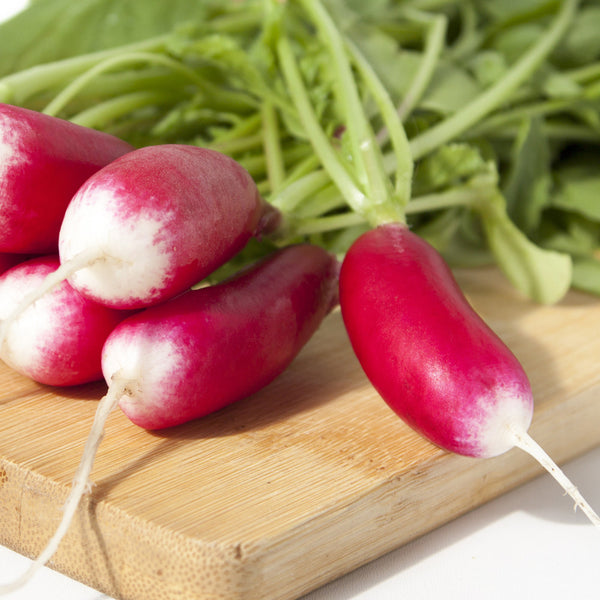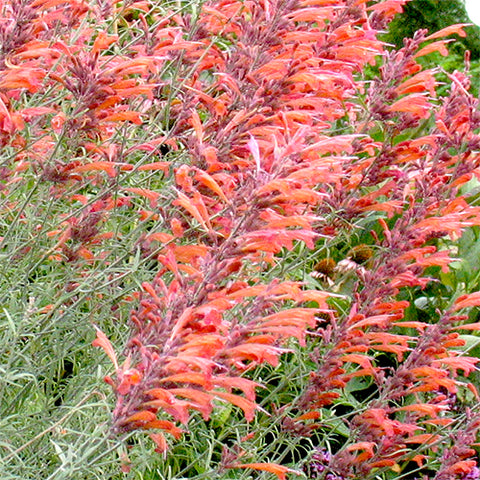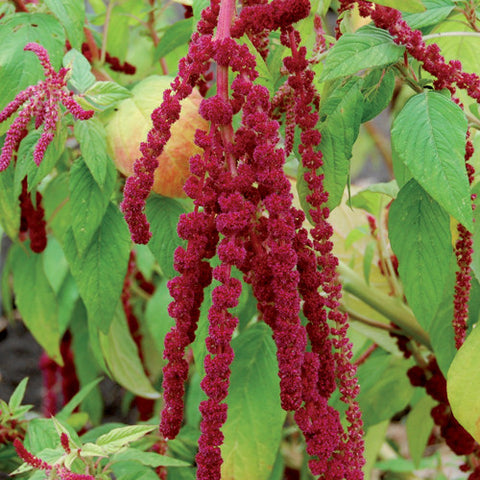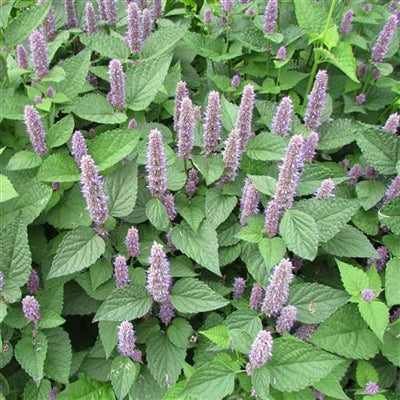Radish, French Breakfast (Certified Organic Seeds)
$4.79
This item may be out of season or currently out of stock. Please check back.
Description: Bi-coloured roots are half red on top and white on the bottom, with a mild, well-balanced flavour and a truly gourmet appeal. Add fresh slices to salads or cook and serve whole. Can become pithy (sponginess caused by over-maturing) if harvested late. Average 2" long.
USDA Certified Organic/ Heirloom/ Open Pollinated/ Non-GMO
Pack Size: 1.77 g (1/16 oz)
Latin Name: Raphanus sativus
Main Uses: Culinary
Days to Maturity: 26 days
Exposure: Full sun
Certified Organic: USDA Certified Organic
Germination: 4 - 6 days at 15 - 21ºC. Keep moist.
Outdoors: Direct seed in loose, well-drained soil three weeks before the last frost. Sow once every two weeks until the end of May for a continual harvest. Fall radishes can be sown starting in early August. The optimum temperature for radishes is 15º C to 18º C.
Planting Depth: 1/2" (plant to 1.5" for larger radishes).
Spacing: 1" in rows 12" apart. Thin to 2" once seedlings are " tall.
Fertilizing (Containers): Plant in a rich, composty potting mix. No additional fertilizer is typically required since radishes are a quick crop.
Watering (Containers): Great radishes come from even watering throughout the life cycle of the plant.
Growing in Mixed Planters: Does well in larger mixed planters and raised beds - think square-foot gardening!
Fertilizing (Garden): Plant in a garden recently amended with compost. No further fertilizing is required.
Watering (Garden): Great radishes come from even watering throughout the life cycle of the plant.
Harvesting: Harvest in smaller lots every few days.
Garden Companions:
Radish Companions: Beans, beets, cabbage, carrots, chervil, corn, cucumber, lettuces, melons, nasturtiums, parsnips, peas, spinach, squash, sweet potato, tomato
Avoid: Hyssop
Special Requirements for Cold Climate Gardeners: Radishes like cool weather and will bolt rather quickly in hot weather. Seeds may be sown between crops that will give some protection from the strong summer sun. May also be container-grown.
Notes: The best way to grow radishes is in small lots, sown every week or so. This allows for regular harvests of "perfect" radishes and avoids the disappointment of spongy or excessively-pungent radishes. Radishes develop best when water is made available evenly - big fluctuations in moisture availability (including that caused by the weather) will yield undesirable (overgrown, or with poor texture) radishes.
Suitability for Indoors: May be grown as a specialized crop.
What about Grow Lights? Grow lights are required to grow this crop indoors.







